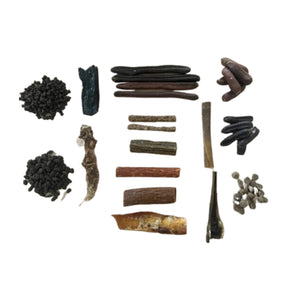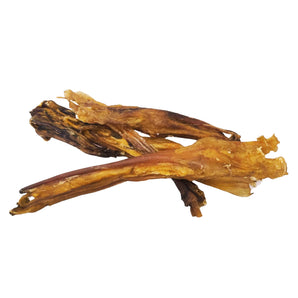Food is the basic necessity of every living being across the globe. And you can't deny it, whether humans, animals, or microorganisms are hustling to get the best food in their tummies.

Your pet depends on what you feed them. They don't get to choose their food; instead, you decide what's healthy food for them, whether raw or processed food like kibble, what energy level they require, and what food they enjoy the most.
Dooglebox is a brand providing 100% natural dog treats, so you don't have to worry about the health of your dogs, and you can avoid processed food.
This article discusses how kibble is dangerous to feed your dog and how you can get the missing nutrients from a Dogglebox. But before you provide any food to your dog, keep a note of these points:
Health
Like humans, dogs also require a healthy, nutritious, and balanced diet to stay healthy.
Size and age of your dog
Nutritional requirements vary between larger and smaller breeds, adults, and puppies.
Activity level
Similarly, the caloric requirements of service and working dogs differ from household pets.
Taste
The food has to taste exquisite to your dog, irrespective of your opinion.
Food allergies
Certain specific food ingredients and proteins, such as eggs, soy, wheat, milk, or corn, can cause an allergic reaction in some dogs.
Your lifestyle
Yes, you heard that right! Your lifestyle affects your dog's diet and how much time you spend cooking and shopping for your pet.
What is kibble?
If I put it clearly, kibble is a junk diet for dogs that is made by grouping up different ingredients into pellets and giving them different shapes for an attractive look. The elements include grains, cereals, vitamins, minerals, meat/fish, and vegetables.
The shape and size of nibbles depend upon the dog's age and breed. For example, chihuahuas, smaller breed dogs, consume smaller-sized kibbles as compared to the giant Danes!
How is kibble manufactured?
Have you ever wondered how the most popular junk diet, kibble, is manufactured? If not, I'll give you a brief idea of how it is made under extraordinary conditions and loses its nutritional value.
Though each brand has its specific ingredients, recipe, packaging, and shapes, all claiming to be highly nutritious, the truth is far from reality. Here's why:
The cooking of all kibble ingredients occurs at extreme temperatures in extruder machines. This mixture undergoes compressing to form different shapes and is coated with fats and oils to mould them into pellets.
Dangers of feeding kibble to your dogs?
All living creatures must devour nutritious food to remain healthy instead of consuming everything that comes their way. It is known as species-appropriate nutrition.
Certain species are sceptical about the food you offer and die if not fed properly. Dogs, unlike other species, are resilient and can consume various foods. As a result, their health suffers, and they may fall severely sick.
Read the below-mentioned nine dangers of feeding kibble to your dogs:
Kibble contains highly processed ingredients.
The major problem with kibble as dry pet food is that it loses most nutrients in the cooking process under extreme temperatures.
To compensate for that loss, the manufacturers add synthetic nutrients and flavours. The added synthetic materials can be carcinogenic and detrimental to your pet.
Kibble's moisture level is low.
Kibble has low moisture levels that can cause dehydration in your dogs. Dehydration results in symptoms like panting, appetite loss, dry and sunken eyes, rigid skin, etc.
They have a higher starch-carbohydrate content.
The key ingredients of kibbles have a higher starch-carbohydrate content, for example, grains, wheat, potato, rice, etc., leading to obesity in pets.
Even if you go for 'grain less' kibble, it often has higher levels of starch-carbs like peas, lentils, and legumes.
Kibble has feed-grade ingredients.
Kibble contains ingredients that are of 'feed grade'. Feed grade implies inedible ingredients from diseased animals.
These ingredients, like animal waste and animal by-products, undergo sanitisation (heat processing at elevated temperatures) to kill deadly bacteria. Therefore, consuming this highly processed food leads to severe health issues.
Increased risk of bacteria.
Kibble is a dry dog food that can attract bacteria at a fast pace. Moreover, there's a risk of storage mites multiplying hastily in kibble, leading to hair loss, itchy skin, and sometimes ear infections.
They have added chemicals and colours.
Kibble has food dyes that adversely affect your pet's health, causing severe diseases like hypersensitivity reactions and cancer.
They may go rancid quickly.
Another con of the kibble diet is that it goes rancid quickly. For extended periods, consuming rancid fats destroys vitamins, leading to fat, protein, and vitamin deficiencies in your pet.
Synthetic fortification of kibble.
Since kibble loses most nutrients while manufacturing nibbles, manufacturers try to add back the nutrient value with synthetic minerals and vitamins. They do so to label their products' balanced and complete' as per AAFCO standards.
However, these synthetic additions to kibble do more harm than good to your dogs, as the dog's digestive system cannot synthesize them. Instead, the digestive system treats these synthetic minerals and vitamins as foreign material, causing stress to the kidney and liver of dogs.
It's lifeless food.
Commercial nibbles not only contain toxins but also lose their nutritional value. So, you can consider them dead food. Even if you are buying expensive, grain-free kibble, with claims such as "all organic ingredients", you can't provide as high of nutrition as the brand promotes.
It is so because even if the kibble contains highly nutritious ingredients, its manufacturing process (cooking under extreme temperatures) nullifies a high portion of its nutrition. The kibble is left with denatured proteins, inactive enzymes, and beneficial, natural bacteria that are not viable.
Choose 100% natural dog treats from Dogglebox for your canine friend.
With that said, you now know the disadvantages of feeding kibble to your canine friend. Now, if you wonder, what is the alternative to kibble then? I have the answer; you can supplement the kibble diet with 100% natural dog treats from Dogglebox.
The brand produces dog food with natural products that keep your dog healthy and provide them with nutrients missing from its current diet. Furthermore, the flavour is 'pawsome', and I am sure your dog will crave more food once they get the hang of treats from the Dogglebox.
You can visit our website https://www.dogglebox.net/ and subscribe to our Dogglebox containing 100% natural dog treats.









![Aggressive Chewer Box [1 kg]: Get 100% Natural Chews Delivered Every Month to Satisfy Your Dog’s Chewing Instinct](http://dogglebox.net/cdn/shop/files/Aggressivechewbox_33e2ca33-6362-4bc3-93d7-8bb76e7cd097_298x298_crop_center.jpg?v=1695208676)
